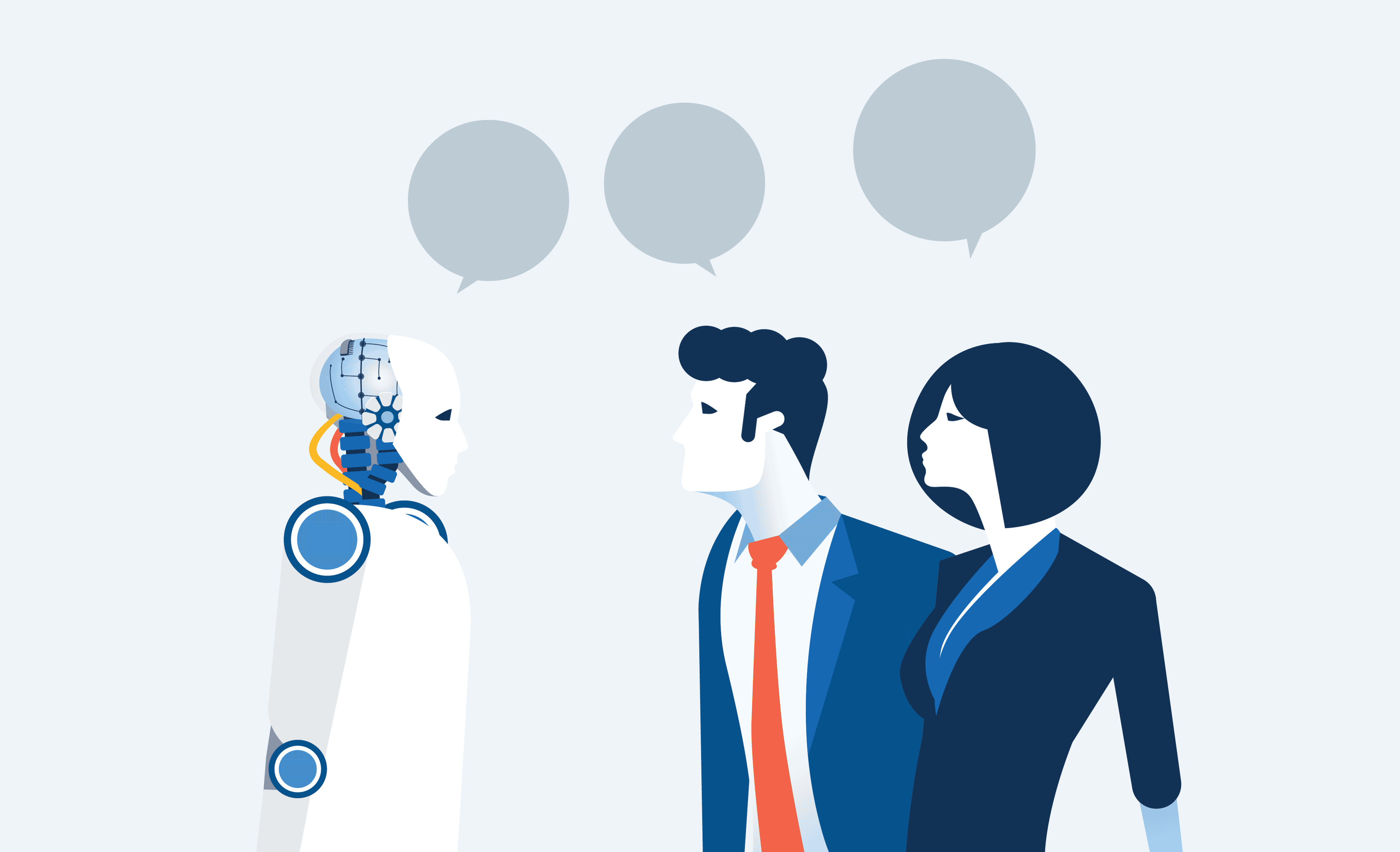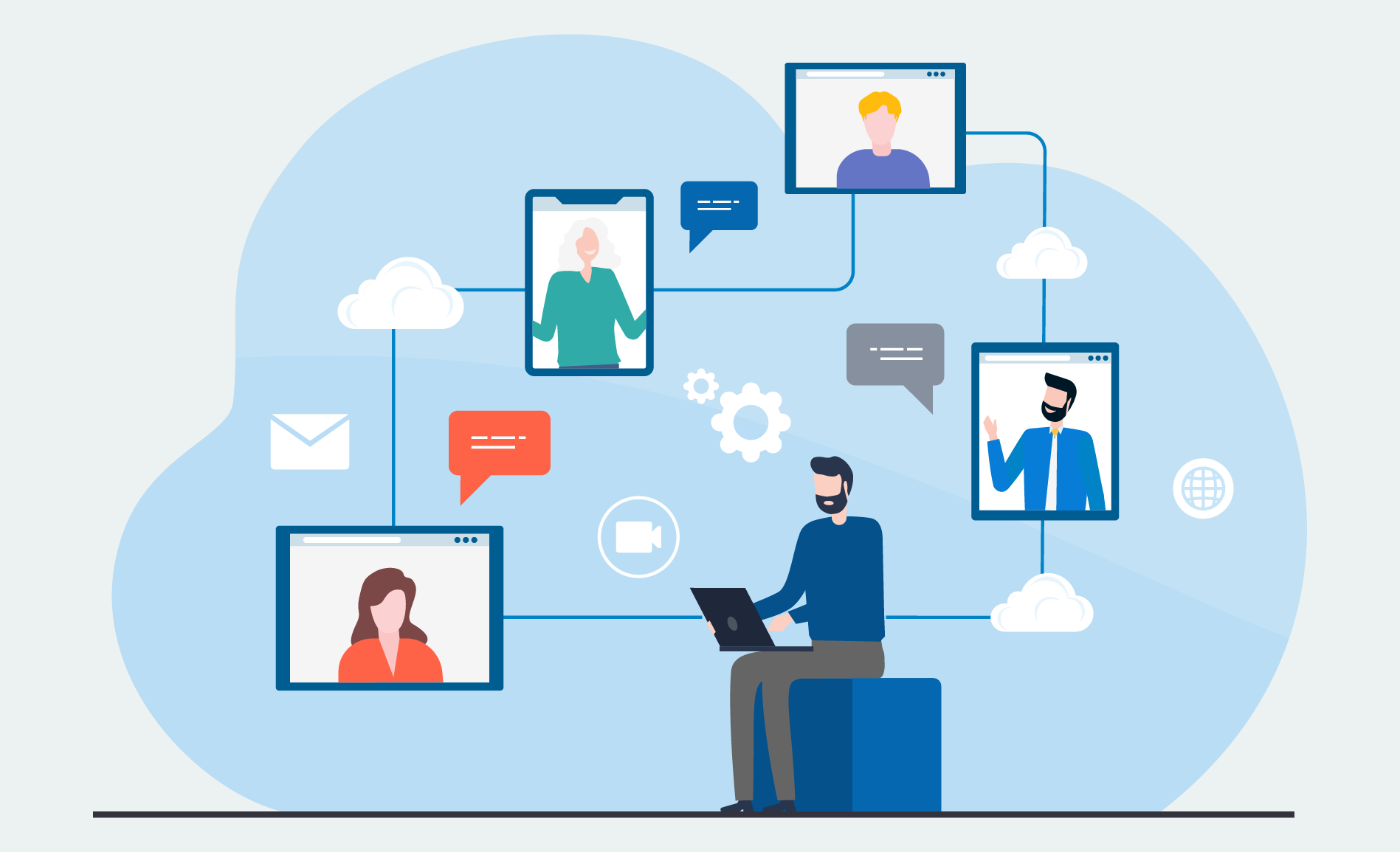By Stephanie Baskerville, Content Writer at ProServeIT Corporation
“This will save you time! Changes to our customer service.”
This is the subject line to a recent email that I received from Koodo, my personal mobile service provider. In the email, I was informed that I can now “say goodbye to waiting on hold” because Koodo, like many organizations out there, has just launched Koodo Assist, a digital rep that will answer my questions online and schedule a follow up call with a real agent, if they can’t answer my questions.
It got me thinking… bots, and chatbots in particular, have greatly increased in popularity over the last few years. Along with virtual assistants, like Microsoft Cortana, Amazon Alexa, or Siri, bots can be used to do a variety of tasks, and automate a variety of tedious processes within your organization. Whether it’s implementing a new chatbot that can help to onboard new employees, creating a chatbot to provide “tier one” troubleshooting support, or helping out your staff with a “Lexibot”, like we did at ProServeIT (more about that later!), bots really do provide great benefits to companies.
In this blog, we want to help you get better understanding into what bots can do for your organization. Without further ado, let’s drive right in!
ProServeIT’s Foray into Understanding Bots & Chatbot Capabilities
As a tech company, ProServeIT is always looking for more ways to push the envelope and help our customers to embrace new technology that will ultimately make their jobs easier. So, with the increased interest in bots and chatbots, naturally, we began to explore if bots would be a viable option for our customers to implement in their organizations. Spearheading this initiative was our Director of Software Development, Alfero Chingono,) and his team of capable software developers.
As Alfero and his team began their research, they visited several websites and tried out their chatbots. One key thing that they noticed in dealing with many of these various chatbots is how artificial the interaction felt when talking to them. In several instances, it was very clear to the team that the responses were canned, and the chatbot was obviously using pre-programmed answers. Our team even found that, when confronted with a question that it didn’t anticipate, the chatbot would spit out a confusing answer, or repeat information it had already given.
This inorganic, forced conversation is something that we, at ProServeIT wanted to avoid at all costs. After all, if it’s just a mechanical conversation, what’s so great about having a chatbot? So, our team started digging – what could we do to make ProServeIT’s chatbot more successful? How could we differentiate our chatbots (and those designed by our team) from others on the market?
The answer Alfero and his team came up with was implementing a LUIS-based conversation flow into the chatbot’s capabilities. When implemented, this has the potential to make the experience using a chatbot both exciting and fascinating. And with LUIS in place, the chatbot would be able to understand the nuances of human conversation and build those nuances into the chatbot’s unique capabilities.
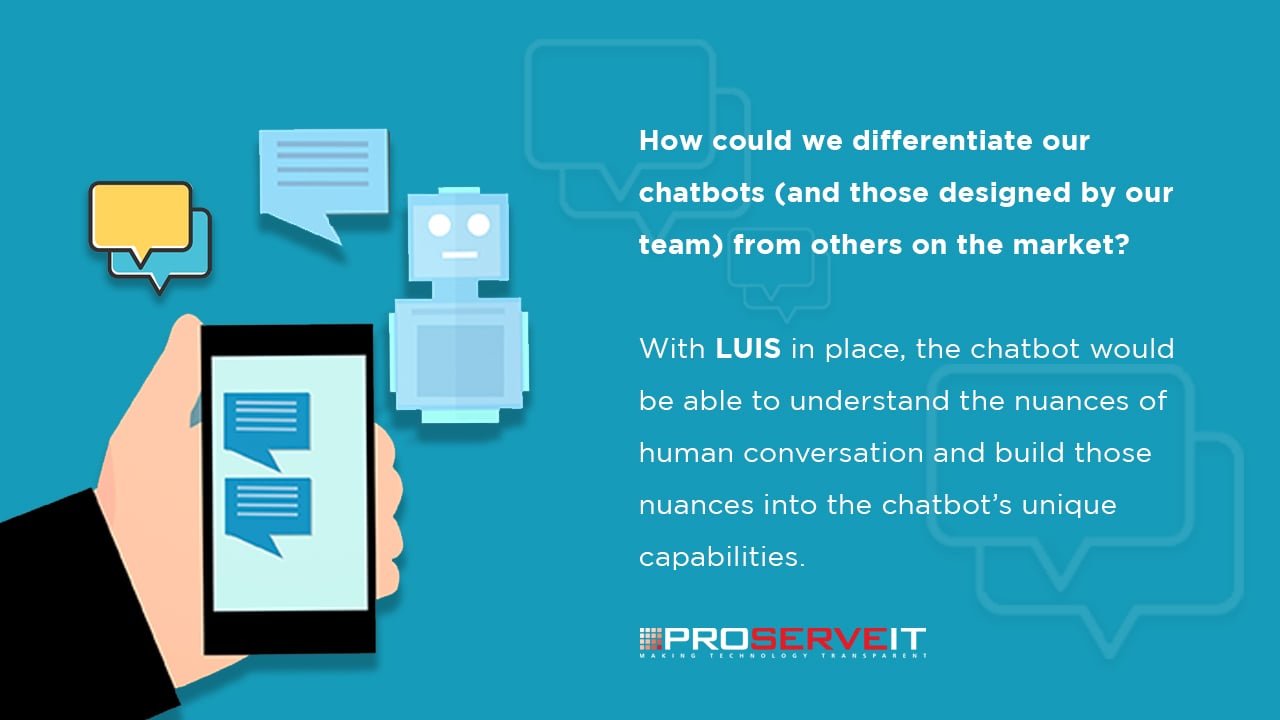
For inspiration, we turned to how Microsoft has implemented Cortana – based on what you ask Cortana, it decides what it’s going to respond, and how it’s going to respond. And, as the Microsoft programmers did, Alfero felt that there was a way to be able to program our chatbot to have its own subtle nuances, so that it felt more human when responding. This is possible through the LUIS-based conversation flow that Microsoft has implemented into the framework of the platforms used to build apps, bots, and IoT devices.
In fact, Microsoft has invested heavily into building a computerized system that can take the words in a particular human sentence and determine what that means from the computer’s perspective. It can detect the intention of that sentence, even if the language doesn’t exactly match. So, for instance, if the chatbot asks a clarifying question that requires a yes or no answer, but you decide to use a variation of yes (yeah, yep, sure, okay) to answer in the affirmative. With Language Understanding, that computerized chatbot can extrapolate that, even though you didn’t use “yes” specifically, you meant yes.
Once our team determined that it was possible to create a chatbot that mimicked human speech pattern, he began to build our first bot. And now, a few months later, ProServeIT has LexiBot, a chatbot that’s capable of answering frequently asked questions and providing our employees and interns with a repository of need-to-know acronyms, terms, and information. Built from the Microsoft Azure framework, Alfero’s team relied on feedback from all of ProServeIT’s employees to find out what acronyms and terms would be most helpful, and what new employees might search for the most.
Now, employees at ProServeIT can begin a Teams chat with LexiBot and ask their questions. If the term that they’re searching for doesn’t come up, LexiBot has been programmed to ask the employee if they would like to submit this term or acronym or search query for inclusion in future iterations.
Understanding Bots: What Makes a Chatbot Successful?
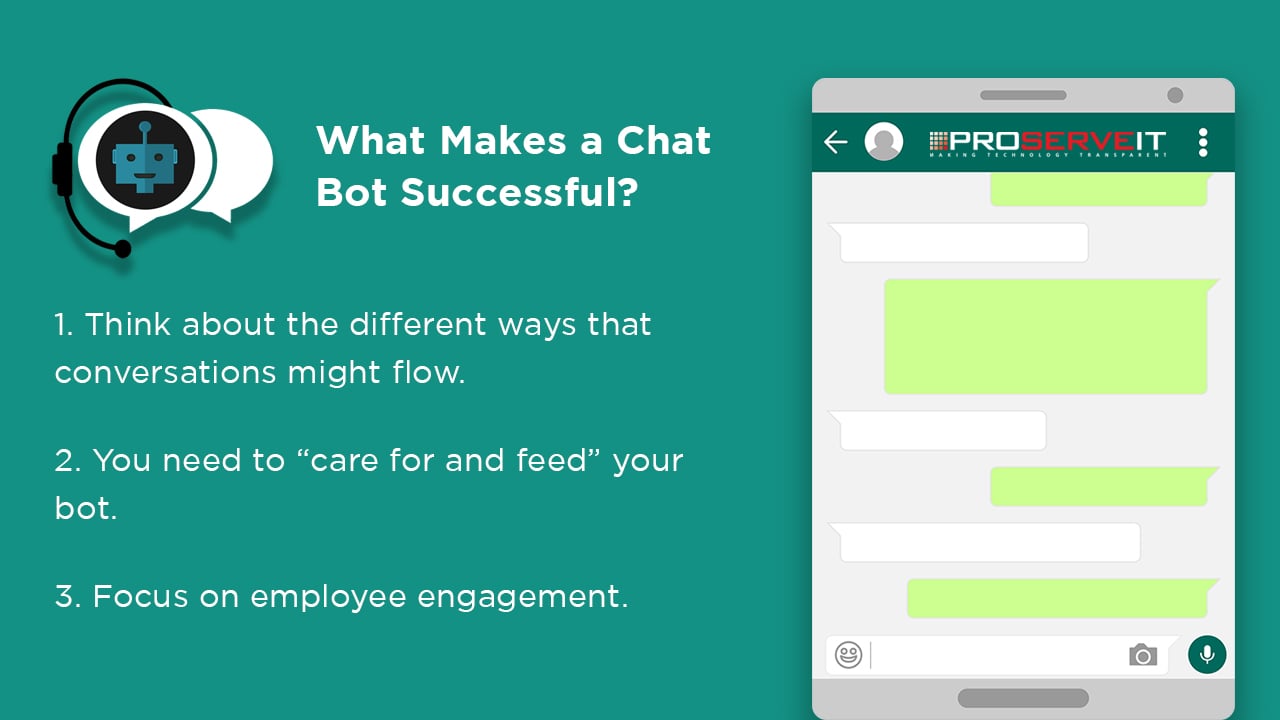
Based on the experiences he gleamed from creating LexiBot, Alfero’s team has determined that it’s not just about being able to feed data into a bot and expect everything to be hunky-dory. To truly make a chatbot successful, you require a few specific things:
- Think about the different ways that conversations might flow. As previously discussed, there’s nothing worse than a chatbot that feels very mechanical, i.e. the bot says this, the user replies, the bot replies, the user replies, and so on. The bots that are truly exciting and engaging are the ones that try to craft the conversation to be flexible – so when the user says they want to learn more about Teams, the bot is capable of determining the conversational path that might come out of this query.
- You need to “care for and feed” your bot. You don’t just launch a bot and wipe your hands because you’re done. Similar to a new pet, you need to not only maintain the bot (in terms of keeping its vocabulary where it should be), but you also need to keep teaching it more and helping it to evolve. We’ll talk a little more about this in the next section, but suffice to say, a successful bot is one that starts as one thing and grows and improves as more and more people use it.
- Focus on employee engagement. What good is a bot if someone only uses it once and doesn’t find the experience useful or helpful in any way? So, in a way, you can measure the success of your chatbot by how many times someone returns to use it. By constantly building new features into your bot, you’re helping your bot to grow and improve, which can, in turn, be used to increase employee engagement with your bot.
The Sky’s the Limit on Chatbots!
Bots are capable of many different types of jobs in your organization. For instance, creating a Chatbot, like ProServeIT’s LexiBot, can help you in answering simple questions about products or services, help employees with learning new terminology, or help respond to simple customer queries. A digital assistant bot, like Cortana, is capable of booking meetings through your calendar, helping you to create to-do lists for your most important tasks, reminding you of important dates or events, taking notes for you, reminding you of upcoming meetings, finding facts, files, places, or information that you need, playing your music for you, opening apps on your system, and much more.
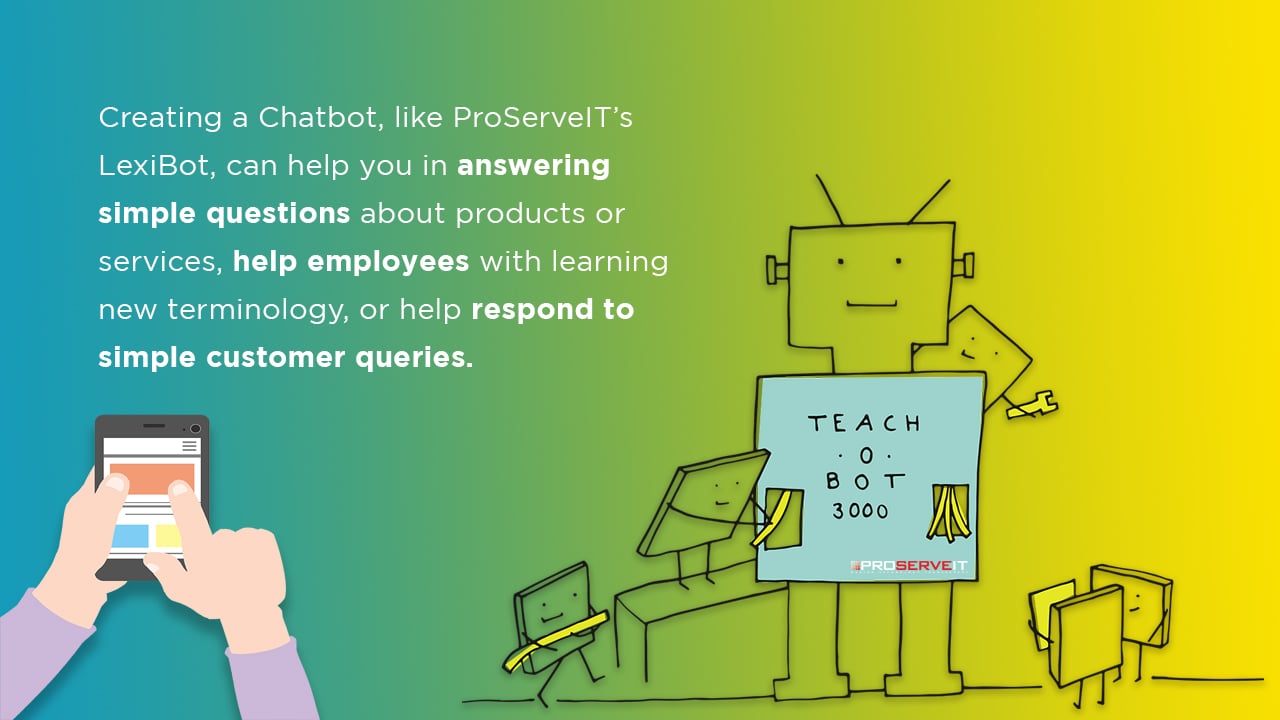
Once you’ve determined what kind of bot you’d like to create, and once your bot is up and running, there is almost no limit to what that bot can be capable of doing (except what current technology allows). As Alfero says, the key to creating bots is our imagination – we have to start from somewhere, but once we’ve established that basic bot, we can keep building, and building, and building! A basic chatbot could, potentially, turn into a digital assistant – it’s just a matter of continuing to work on your bot, and keeping your overall goals in mind when making any edits.
Get Started with Your Own Chatbot!
Like what you’ve heard so far? Ready to see what chatbots can do for your organization? ProServeIT’s Bots Discovery Session for business and IT decision-makers can determine whether or not a bot is the right fit for your organization, help you understand your organization’s unique needs and priorities and what your new bot might be used for, and help you to plan out how a bot might be able to be deployed.
Want to get started? Alfero and his team are ready and willing to assist – just give us a shout today and let’s begin building your new bot!

